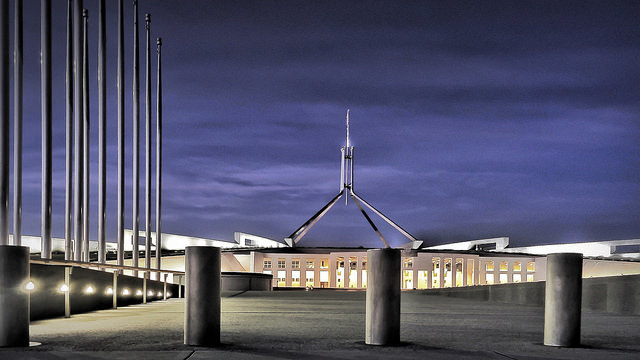Reader response: straddling the divide
Posted By Mike Scrafton on February 12, 2016 @ 11:30
As someone who has straddled the public servant/ministerial adviser divide I found that the first two [2] parts [3] of Graeme Dobell’s series on the Canberra Minder caused me to reflect on my own experience.
During my time in Parliament House and as a senior executive in both Federal and State bureaucracies I discovered that there’s as much variation in ideology, quality, competence, respectfulness and cooperativeness among ministerial advisers as I found among ministers and public servants. In many of the more complex and technical portfolios those ministerial advisers (including chiefs of staff) are often seconded public servants.
On many occasions I’ve seen the weight of a capable public servant match or outdo the relevant ministerial advisers in the policy debates and in the deliberations of Cabinet committees. Though it’s more common in my experience that these days ministerial advisers and senior public servants quickly find an accord and act as willing partners in pursuing their Minister’s objectives.
I concede that dysfunctional relationships aren’t infrequent—they’re mostly driven by individual personalities and can impede effective policymaking. Particular ministerial offices (Defence included) were, on occasion, hostile territory for public servants owing to the presence of particular minister or adviser. I’ve similarly encountered more than a few public servants who’ve contributed to bad relations with ministerial offices. But I think that these days examples of productive professional relations abound.
The reforms recommended by the landmark Coombs’ Royal Commission in 1976 [4] were designed to overcome what was seen to be a largely inflexible, insular, unresponsive, unaccountable, self-important and complacent public service that confronted the progressive Whitlam ministry. Whitlam (and Fraser after him) found a hierarchical service culture dominated by white males and led by powerful male permanent heads whose views of society and governance had been shaped by the Great Depression and the Second World War. The social revolution, the political and civil upheavals of the 1960s and the rising demands of multiculturalism, workplace diversity and gender equality hadn’t yet penetrated the public sector.
There was something inevitable, legitimate and positive about the emergence of minders at that time and it seems to me that, on the whole, ministerial advisers have since evolved in tandem with the public service.
With regards to the Defence portfolio, I was well positioned to observe the pre-eminence of public servants in the intellectual shaping of the 1987, 1994 and 2000 Defence White Papers and the prominent role of public servants in the management of such strategic policy documents through ministerial and Cabinet processes.
My experience runs counter to Graeme’s claim that ‘the political staffer in the ministerial office as more powerful than the public service at key moments’, although in specific instances and in other portfolios the situation might be different.
It’s also worth noting that the lead authors of 2000 and 2009 White Papers are among those who have also straddled the public servant/ministerial adviser divide as indeed is the current Executive Director of the Australian Strategic Policy Institute, Peter Jennings. I believe that this is a great strength. Such instances are but a few examples of individuals working not only across the divide but doing so with equal professionalism for governments of either party.
Perhaps the nature of strategic policy makes it distinctive. But personally I look back on many occasions when the best interests of the nation (or the State) have been served by so-called minders and public servants complementing each other in their respective roles in support of their Minister.
Article printed from The Strategist: https://www.aspistrategist.org.au
URL to article: https://www.aspistrategist.org.au/reader-response-straddling-the-divide/
URLs in this post:
[1] Image: http://www.aspistrategist.org.au/wp-content/uploads/2016/02/15469961286_ae807a6f17_z.jpg
[2] two: http://www.aspistrategist.org.au/the-canberra-minder/
[3] parts: http://www.aspistrategist.org.au/the-birth-of-the-canberra-minder/
[4] Coombs’ Royal Commission in 1976: http://apo.org.au/resource/royal-commission-australian-government-administration-report
Click here to print.
